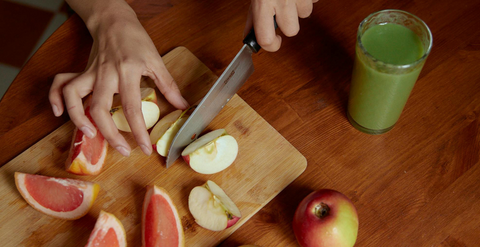Healthy blood pressure balance is an often overlooked yet critical aspect to living a long, well-lived life. Unlike with other health concerns, when symptoms raise their head to indicate something is not working as it should in the body, unhealthy blood pressure balance tends to remain symptomless.
While it’s normal for blood pressure balance to fluctuate over the course of the day or when undertaking different activities, when it remains elevated above normal over the long term, this stealthy situation is creating unseen damage – so it’s little wonder then that hypertension is often referred to as the ‘silent killer’.
With no obvious symptoms, even when dangerously advanced, consistently elevated blood pressure is quietly making its mark. It impacts cardiovascular health, kidney function, vision and even brain health, all whilst increasing the risk of a significant cardiovascular event.
In New Zealand, around 1 in 5 adults live with high blood pressure. In Australia, that figure is about 1 in 3. Globally, it’s one of the most common health concerns to affect people as they age, yet worryingly it’s also becoming an increasingly prevalent problem amongst younger age groups too.
But there is good news too! Research demonstrates that over 80% of high blood pressure cases may be preventable through simple, evidence-informed lifestyle changes. As unhealthy blood pressure balance is known to be associated with modifiable risk factors including obesity, sedentary behaviour, dietary choices and cigarette and alcohol consumption, these are also factors over which we have some control to change for the better.
While many people are unaware of their blood pressure ‘numbers’, maintaining healthy blood pressure balance is one of the most effective ways to support long-term cardiovascular wellbeing.
Why healthy blood pressure balance matters
Blood pressure is one of the most important indicators of your heart and vascular health. When it’s within a healthy range, it helps ensure that oxygen and nutrients are efficiently delivered to your organs and tissues. But when it rises over time and remains consistently elevated, it causes the heart to have to work harder to pump blood around the body, putting additional strain on the heart and the vascular network.
“Blood pressure” relates to the force exerted by blood against the walls of the arteries as they carry blood away from the heart to the rest of the body. It consists of two numbers. The first number is systolic pressure - how much force is exerted against arterial walls when the heart beats. The second number is diastolic pressure – how much force is exerted against arterial walls between heart beats when the heart is at rest. Blood pressure is measured with a simple arm cuff and the reading is presented in millimetres of mercury (mmHg).
Knowing your numbers
Healthy blood pressure balance is a blood pressure reading of 120 / 80mmHg or lower. Borderline elevated blood pressure is when the systolic pressure falls between 120-120 mmHg, and the diastolic pressure remains constant at 80. Stage 1 (mild-moderate hypertension) occurs when systolic pressure falls between 130-139 and diastolic pressure falls between 80-89. Stage 2 (moderate-high) hypertension occurs when the systolic pressure is over 140, and the diastolic pressure is above 90.
Hypertensive crisis is a medical emergency and occurs when systolic pressure readings are higher than 180mmHg or diastolic pressure is higher than 120mmHg. Blood pressure that is too low can also be a problem – so keeping pressure within a healthy range is the ideal.

If you’re unsure how your own blood pressure readings stack up, you can chat with a naturopath for guidance on what they mean and how to support healthy balance.
Your 5-step blood pressure check list
Moving the dial on your blood pressure balance doesn’t have to be as hard as you think! Small, sustainable lifestyle changes - from what’s on your plate to how you move and unwind - can go a long way in supporting that all important balance. Here’s the top 5 targets to managing your blood pressure balance naturally.
1. Move daily – even a little counts!
Physical activity plays a key role in cardiovascular wellbeing and is one of the best ways to naturally manage blood pressure balance. Regular aerobic exercise strengthens your heart muscle, improves arterial flexibility, and helps your body use oxygen more efficiently - all of which support healthy blood pressure levels.
The Heart Foundation recommends at least 30 minutes of moderate-intensity activity on most days of the week. This could be brisk walking, swimming, cycling, or even gardening – anything that gets the heart rate up and working at a higher capacity to build its resilience.
Multiple studies, including a meta-analysis published in the British Journal of Sports Medicine, conclude that aerobic activity can support a reduction in systolic blood pressure (the top number of your blood pressure reading) by an average of 5-8 mmHg – comparable to the effects of some medications. This could be an effective early strategy for some people before having to consider pharmaceutical support.
2. Eat more nitrate rich and potassium packed foods
What you eat can influence blood pressure balance. A heart-friendly diet is heavy on colourful plant foods and much lighter on highly salted, fried, processed or artificial foods. Two simple targets to increase in your daily diet include:
-
Nitrate-rich vegetables like beetroot, spinach, and rocket, which help support nitric oxide production - a compound involved in healthy blood vessel function.
-
Potassium-rich foods such as bananas, avocado, sweet potato, and legumes. Potassium helps balance the effects of sodium in the body, and modern diets are typically very deficient in this important mineral.
The DASH diet (Dietary Approaches to Stop Hypertension), endorsed by health authorities worldwide, encourages eating more vegetables, fruits, whole grains, lean protein, and low-fat dairy to support cardiovascular health.
3. Reduce sodium, alcohol & processed foods
Excess sodium in the form of table salt or added to foods is widely recognised as a factor that can influence blood pressure balance. Much of the sodium in modern diets comes from processed and packaged foods, so prioritising whole-foods over convenience foods can make a big impact.
Most international health authorities recommend aiming for less than 2000 mg of sodium per day – the equivalent of about 1 teaspoon of salt. Limiting alcohol is also recommended. While moderate consumption affects individuals differently, frequent or heavy drinking is known to be associated with elevated blood pressure.
Simple swaps:
-
Use herbs and spices instead of salt.
-
Choose fresh, whole foods over processed options.
-
Try kombucha, herbal teas, or sparkling water with citrus instead of wine or beer.
4. Stress less (seriously!)
Prolonged stress can influence your cardiovascular system through the release of hormones like cortisol and adrenaline, which may contribute to temporary increases in blood pressure but can also cause longer term changes when stress is a chronic experience.
Helpful practices to manage stress:
-
Daily mindfulness or meditation practices
-
Deep breathing or diaphragmatic breathing techniques
-
Spending time in nature – the Japanese art of ‘forest bathing’
-
Gentle movement like yoga or tai chi
-
Staying socially connected
These practices support a reset of the autonomic nervous system, supporting a rebalance towards parasympathetic function which promotes overall wellbeing.
5. Support nitric oxide and vascular health
Nitric oxide (NO) is a naturally occurring molecule that supports healthy blood flow. As we age, especially after 40, our natural NO production starts to decline. NO works to relax arterial walls to support vascular flexibility and vaso-dilation – the ability of arteries to shrink and expand easily to accommodate increased blood flow with activity without additional pressure restrictions that occur when arteries are become more rigid.
To support nitric oxide production:
-
Eat nitrate-rich vegetables (beetroot, celery, leafy greens)
-
Stay physically active
-
Consider targeted nutritional support like Neo40 by HumanN, a formulation designed to help maintain nitric oxide levels and vascular health. Neo40 contains scientifically researched ingredients with a demonstrated role in supporting cardiovascular function.
Neo40 contains ingredients clinically researched for their role in cardiovascular support.
Final thoughts
Your blood pressure doesn’t just reflect your heart health – it tells a story about how well your body is functioning overall. While high readings can be a cause for attention, it also offers a valuable opportunity to take meaningful action with achievable steps that support your wellbeing today and into the future.
Whether it’s cooking more plant-based meals, getting active outside more often in nature, or finding moments to relax in your day, each small shift counts. By making consistent, supportive changes to your daily routine, you’re not just managing a number – you're investing in your vitality & longevity.
Looking for natural ways to support heart health?
👉 Explore our Blood Pressure & Circulation range
References
Hou, Y., & Yang, S. (2024). Association of risk factors for high blood pressure across 46 low- and middle-income countries: A multi-country cross-sectional analysis. Journal of global health, 14, 04087. https://doi.org/10.7189/jogh.14.04087



